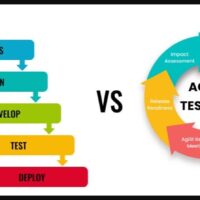Developing a project with complex business logic requires a lot of effort from the team, time, in-depth study of the subject area and the ability to solve non-trivial technical problems.
In many projects in the IT industry, a huge plus is the fact that the developer has expertise in the subject area, the ability to make informed technical decisions and avoid templates. A specialist is extremely in demand if he is equally well versed in the technical side of development, and, for example, in the intricacies of accounting, banking, logistics, a narrow industry or medicine. It is difficult to find such expertise quickly.
If a standard approach is applied to a project with complex business logic, the specialist, of course, receives a description of the business processes specific to this area. And then everything depends on his ability to quickly and deeply understand the new field of knowledge for himself. If there is a project manager in the communication chain between developers and subject matter experts, he broadcasts the developers’ questions to the experts and answers from the latter. The manager’s job in this chain is usually to translate from technical to human and vice versa. Therefore, the standard approach to the development of a complex project requires a lot of effort and concentration of attention from all participants.
Domain-Driven Design (DDD), or Domain-Driven Design, offers a more efficient model of the development process for complex projects. It is a methodology that is applied to obtain a high-quality software model that accurately reflects the stated business goals.
Readers will learn how to use a domain model to make complex development more focused and dynamic. A core of best practices and standard templates provide a common language for the development team. The shift in focus – refactoring not only the code, but also the model underlying the code – combined with frequent iterations of agile development leads to a deeper understanding of domains and improved communication between the domain expert and the programmer. Then Domain-Driven Design builds on this foundation and turns to the modeling and design of complex systems and large organizations.












